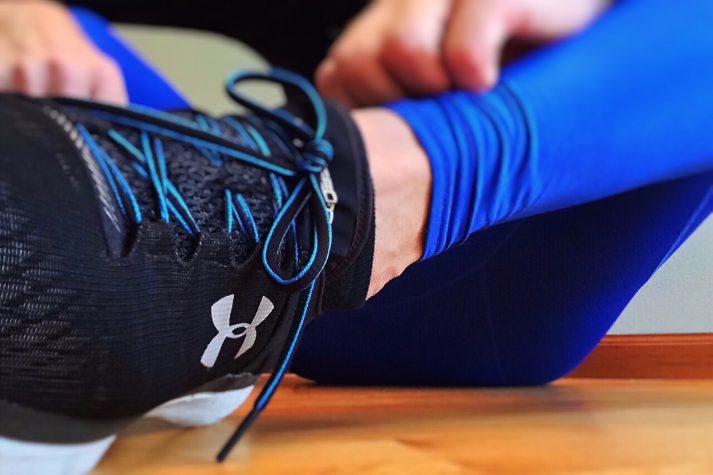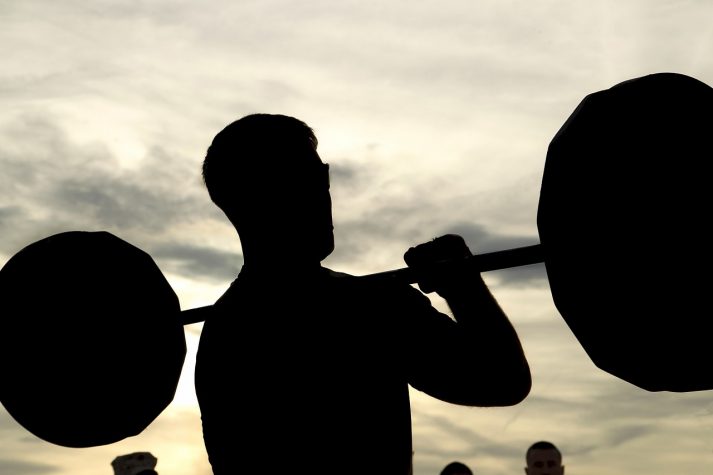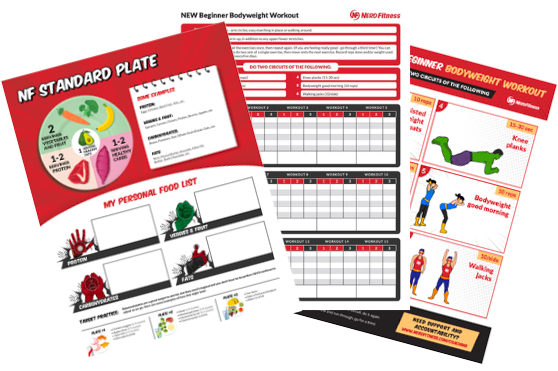
This is an article from NF Rebel Researcher, Sara.
In this age of superhero and fantasy franchises, it’s fair to say that not every reboot has improved upon the original. I’m looking at you, Man of Steel and Amazing Spider-Man!
While Peter Jackson’s LOTR trilogy is a bona fide hat trick, more recent attempts to translate great stories into cinema have run the gamut from pretty fantastic, like Game of Thrones, to… not so good. (That would be you, Warcraft.)
Seven lucky years into Nerd Fitness, we’re getting into reboots ourselves, digging into the nitty gritty on some subjects we haven’t touched on in years!
Last month we wrote about the importance of keeping an open mind and being persuadable in light of new evidence or more experience.
Today, we’re tackling a major fitness doctrine: the benefits of HIIT (high intensity interval training like sprints) and weight training over steady-state or continuous cardio (like running or hopping on a bike).
Before we dig into the research, I want to make sure you have our free resources to help you make the most of whatever method of training you use to get fit. We have templates for tracking bodyweight workouts, guides on the most effective diet, and several other downloadables to start you on the right foot. Enter your email below and we’ll send you the downloads right away.
Back to the Future

In 2010, we compared the caloric burns from cardio, interval training (including but not limited to HIIT), and weight training, walking you through the pros and cons of each.
Ultimately, we advised you to choose the exercise that best fit your definition of fun (6th rule of the Rebellion!). If you’re not enjoying it, try something different!
You may have noticed, however, that we tend to promote weight and interval training far more than cardio. As Steve infamously explained: “I’d rather punch myself in the crotch than spend two hours on a treadmill.” (Coming soon to a t-shirt near you.)
It appears that steady-state cardio — at any intensity — has been losing the publicity battle to HIIT and other forms of interval training, as well as weight training, in this young 21st century.
As we Rebels know, leveling up our lives means questioning everything and acknowledging that dearly-held beliefs may, in fact, be resting on shaky foundations. So, just like Melisandre had to rethink her belief in Stannis as the Prince Who Was Promised, it’s time for us to take a closer look at the new research behind our recommendations.
So What Does the Science Say?

We scoured the research to ask ourselves: six years later, what does the science say in 2016?
We found that the majority of studies do in fact conclude that HIIT is equal to or better than cardio for improving overall health and fitness. Case closed? Not exactly: if you look beyond the two-sentence summaries, things aren’t so cut-and-dry.
Researchers in this July 2015 study, for instance, analyzed multiple HIIT vs cardio trials and declared HIIT the winner. But if you read the fine print in the discussion portion of the study, the researchers actually described the conclusion as saying HIIT had “a possibly small beneficial effect” over cardio (our emphasis).
Remember: HIIT isn’t called high intensity interval training for nothing. It’s tough. That might be an understatement. Most people do not do HIIT regularly because it is so darn hard.
So when we saw this we thought: Wait a minute — are you telling me that HIIT is lots of pain for not-that-much-gain?!?
According to this study, that’s exactly what seems to be happening. Whether or not the grueling intensity of HIIT is worth the minimal gains is up to you. For some Rebels, especially those with limited time to train, getting the most ‘bang for your buck’ and counting every last tenth-of-a-calorie may matter a lot, whereas others will prefer to take the longer, less orc-filled (and easier on the joints) road to Mordor.
One study doesn’t topple a juggernaut, but we’ve shown you this example because it’s representative of how the research in this battle of HIIT vs cardio is less concrete than the “DO THIS NOT THAT” headlines suggest. (Check out the links throughout this section to see this ambiguity in action.)
But let’s dig into the central issue here: the afterburn effect.
Then and Now: HIIT vs Cardio Afterburn

Six (!) years ago, we argued that the afterburn effect was a key reason why cardio was inferior to interval and weight training. Also known as EPOC, or Excess Post-exercise Oxygen Consumption, it’s the amount of oxygen your body needs to return to its normal, resting metabolic state (more oxygen needed, more calories burned).
HIIT = more afterburn, so HIIT = better. Right?
Right?
Well, in a 2015 study, researchers compared the afterburn of cardio, HIIT, and weight training workouts. They concluded that both HIIT and weight training produced more afterburn than cardio for up to 21 hours post-exercise, but, surprisingly, they also noted that theirs is the only study showing that HIIT has a higher afterburn than cardio when the workouts burn the same number of calories.
That’s worth writing again: these researchers claimed that their study was the only one for which HIIT had a higher afterburn than cardio when the workouts burned the same amount of calories.
Well, at least the HIIT workout gets me the same amount of calories in less time, right?
Wrong.
Yeah, you read that right: wrong.
Both workouts took about 40-45 minutes (as did the weight training regimen). While it’s true that the HIIT protocol included relatively long 2-3 minute recovery intervals when rest times were factored in, the results suggest that HIIT may not be vastly superior to cardio here.
(The researchers also acknowledge that their best-case scenario — that HIIT and weight training each burns up to 300 more calories per day — will inevitably decrease as bodies adjust to training regimens.)
This last point is a great reminder that the biggest caloric gains and losses ultimately happen in the kitchen: (Neither EPOC, nor or anything for that matter, can make up for EBOC: Excess Brunching Over Coffee/Champagne.) You can’t outrun your fork (another rule of the Rebellion!).
When fitness author Lyle McDonald explored this question using a power meter bike and an electronic calorie-counter, he found that a seemingly impressive 7% difference in afterburn between a 30-minute HIIT workout and 30 minutes of cardio translated to just 14-21 calories. (You can usually burn more than that by adding 5-10 minutes to a cardio workout.)
As for weight training, afterburn appears to increase with exercise intensity, but the actual gains measured vary widely, from 6 to 800 (!) calories. Because weight training has so many benefits already, any afterburn we do get is like the shiny gold and hot-rod red accents on Iron Man’s suit: not as functional as the sweet hand and feet repulsors that allow Tony to fly and fight bad guys, but still awesome.
Speaking of extra features, we thought HIIT helped to make your heart more adaptable and handle the stresses of physical exertion and daily life. While the jury’s still deliberating on the best regimen to elevate heart rate variability (HRV) – a new measure of this adaptability – it looks like any aerobic exercise will help, as long as you’re not overburdening a weakened heart with extreme events or workouts.
Enough with the science… just tell me what to do

Remember the final battle in Iron Man, when Tony Stark has to use his old arc reactor after Obadiah Stane stole his newer, improved one? Even though it drains power like a second-gen iPhone, Stark still uses it to soar high enough into the stratosphere to get Stane’s suit to ice over and stall (and to think that he wanted to throw it away)!
That’s one way to think about cardio and HIIT: one type of exercise may be newer and shinier, but both can help you save the day.
Like most other reboots, ours has the same ending as our original: The most important exercise continues to be the one that you will actually do, and do safely.
If you’re loving the challenge of HIIT, that’s great. If you prefer a less intense (but slightly longer) workout, that’s great! If you lift heavy things, THAT’S OBVIOUSLY THE BEST… I mean, that’s great!
The biggest takeaway is that exercising doesn’t have to be the image you conjure that gives you an “ugghhh” feeling in your stomach. If running on a treadmill in a basement just sounds awful, try something else! If strength training in a gym isn’t your thing, no problem!
We created several resources to help you get started and find what exercise you LOVE to do and will ACTUALLY do regularly. Enter your email below and we’ll send you these free PDF guides and downloadable templates right away.
As the science and research continues to grow, we’ll be constantly providing you with the most up-to-date information. We want to help you train smarter, keeping you injury free and happy.
Keep in mind that whatever works for you and your life should never be ignored. Studies designed for the lab often remove the complexity of implementing these techniques in the real world. In fact, one study tested a self-guided HIIT program outdoors and found that participants had to modify the protocol because of injury AND that results in the real world were a lot different (a lot worse) than the lab version.
That’s why we always say if it’s working for you, keep doing it. Your body is your lab, where the most important research happens. Let the studies give you options, but never let them override your hard-won knowledge about yourself.
Plus, why does it have to be either/or? I’ve always liked the “both/and” approach in real life. (Why call on just one Avenger when you can have them all?)
The bottom line: If you want to keep your workouts as short as possible and enjoy pushing your limits, then go for HIIT. Stick to a healthy schedule, however, to avoid injury: no more than 3 HIIT workouts weekly, and work on that running form!
If you have the time and prefer slower (but possibly greater) gains, then steady-state cardio is your friend.
Regardless of which type of cardio you prefer or are working on, make sure you’re doing it right! The right pair of shoes and proper running form can be the difference between effortless enjoyment and an injury that leaves you sidelined. Here’s how to not suck at running!
Oh, and keep or start weight training for all the reasons that Staci gives here. (And better yet, mix in all three.)
And remember, the real caloric battle happens in the kitchen. It’ll also help keep you safe: the less you weigh, the less jarring an impact each step in a run/sprint/walk will have on your joints!
We’d love to hear from you:
How do you personally settle this HIIT, cardio, weights debate?
What popular advice have you had to modify or avoid because you listened to your body?
Are there any other Nerd Fitness topics you want to see a “reboot” of or a deep dive into?
-Sara
Credit where credit is due: Trainer, and erstwhile guest poster, Anthony Mychal, recently published The Myths of HIIT, a Thor’s hammer of a myth-busting e-book that was a major resource for this update.
###
photo: Workout Lego, Science Lego


